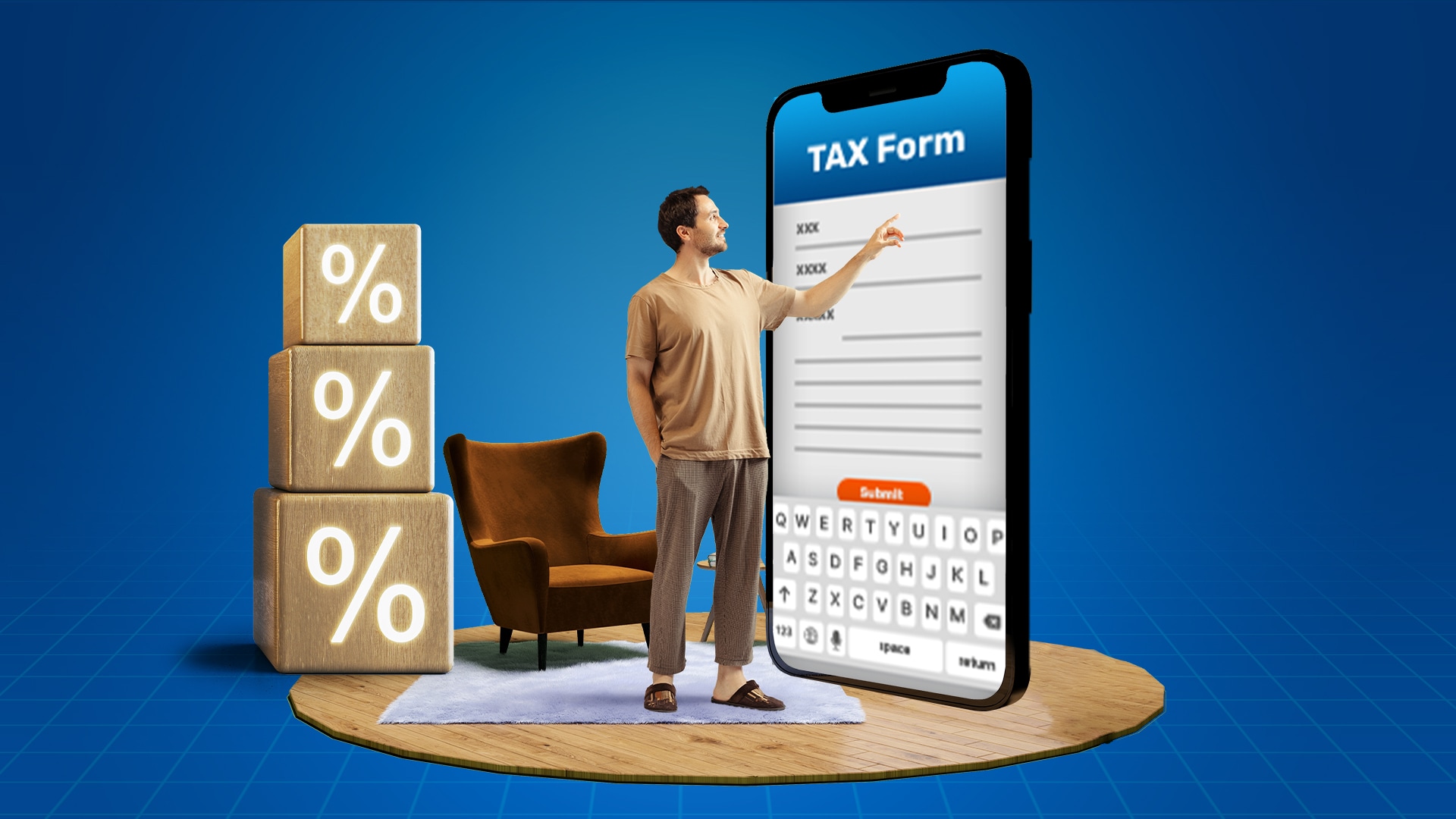For individuals who are unsure of what TDS is and are asking themselves, "What is TDS?," it is the income tax that is subtracted from an amount during a certain payment. The Income Tax Act of India, 1961, states that if an individual or organization's income exceeds the predetermined threshold, they must pay the tax. TDS applies to various payments, including wages, commissions received, rent, interest paid by banks, and professional or consulting fees, among others.
Depending on your tax bracket, the income tax is a direct tax applied to your income. TDS, or Tax Deducted at Source, is a crucial taxation term that significantly impacts taxpayers under the Indian tax system.
TDS was implemented to obtain tax from the source of income itself. Typically, the recipient of such payment is required to pay income tax. After deducting TDS, the beneficiary receives the entire amount. Their final tax liability is calculated by adding the gross amount to their income and adjusting the TDS accordingly. After the individual submits their income tax return, the total TDS can be claimed as a tax refund.
The TDS amount can be computed by using the Form 26AS on the income tax portal. It is a tax credit statement with a detailed report of TDS deducted during a financial year. Here is a step-by-step guide to know the deducted TDS amount.
Step 1: Visit the income tax e-filing official website
Step 2: Log in or register if you are a new user
Step 3: Enter the necessary details such as your PAN to generate the password password
Step 4: Log in using the registered credentials
Step 5: Select the option to view Form 26AS or your tax credit statement
Step 6: You will be redirected to a new TDS Reconciliation Analysis and Correction Enabling System webpage.
The page will have all the details of your tax liabilities, including any advance tax paid, TDS, and other relevant information.
A TDS deduction is applicable when the taxpayer either gets the payment in parts or receives the entire payment at once. Let’s understand its application through examples.
Let’s assume Mr. Satish is a self-employed professional who received Rs.40,000 in advance and Rs.20,000 after completing his work. In this case, the payee will deduct Tax Deducted at Source from the advance and the amount received after completion of work. Here, the TDS rates will be 10% of the amount, i.e. Rs.4,000, and 10% of Rs.20,000, i.e. Rs.2,000. The total amount of payable tax will be Rs.6,000.
In another scenario, if Mr Satish receives the full payment of Rs.60,000 after completing his work, he will be taxed Rs.6,000 from the total amount by his payee, earning him a total of Rs.54,000 for his work.
You can check your TDS refund status through either of these steps:
Through the refund processing email from the IT department
Check the TDS refund status using your PAN number on the official income tax e-filing website
Section |
Payment Type |
TDS Rates (in %) |
Sec 192 |
TDS on Salary Income |
No specific rate of TDS on salary |
Sec 194 |
TDS on Dividend u/s 2(22) |
10% |
Sec 194 A |
TDS in Interest Income |
10% |
Sec 194 C |
TDS on Credit/Payment to a sub-contractor or resident contractor |
1% (for HUF and individuals) 2% (for others) |
Sec 194 D |
TDS on Insurance Commission |
5% |
Sec 194G |
TDS on Lottery tickets Sale Commission |
5% |
Sec 194H |
TDS on Brokerage or Commission |
5% |
Sec 194-I |
TDS on Income received via rent |
2% (from plant, machinery or equipment) 10% (from furniture or fixtures, land and building) |
Sec 194- IA |
TDS on Immovable property Transfer |
1% |
Sec 194 J |
TDS on Professional fees, Royalty, Technical fees or director remuneration a |
10% |
Sec 194LA |
TDS on Acquisition of any specific immovable property |
10% |
Section 194N |
TDS on Cash withdrawal |
2% (exceeding Rs. 20 lakh) 5% (exceeding Rs. 1 crore) |
Under section 244A of the Income Tax Act, the Income Tax department pays you a simple interest of 6% on your TDS refund amount, for the applicable period. However, if the TDS refund amount is less than 10% of the tax paid, you will not get the interest on the refund.
Things don’t always go right - In case there has been excessive delay in getting your TDS refund, or if you face issues with verification, you can contact an Income Tax officer. You will need to keep all your documents handy for this. If you still need help with your complaint, you can contact the Income Tax Ombudsman for further assistance.
TDS Refund for fixed deposits
Before the end of the fiscal year, you should inform the bank if you do not have any taxable income.
However, you will need to submit an ITR if the bank continues to deduct tax from interest generated through FDs.
For Senior citizens
Up to Rs. 50,000 in interest from FDs is not subject to taxation for those 60 and older.
You can give your bank Form 15H if you don't have taxable income. If the bank has nonetheless deducted the tax, you can file your ITR to request your TDS refund.
Typically, you claim your TDS refund when you file your income tax return. The investments you had planned at the start of the fiscal year frequently differ from your investments at the end. After completing your ITR, the difference between the tax charged and the payment amount will be credited to your account.
To expedite the TDS refund procedure, it is advised that you supply your bank account information, including your IFSC code. You will need to complete an e-verification when you file the ITR. You will need an e-signature with either your net banking account or an OTP, depending on your Aadhaar. You can complete this verification offline by signing a paper copy of your ITR and mailing it to the Income Tax division. You can check the status of your TDS refund online in three simple steps if you've already submitted your ITR.
You can follow either of these steps to check the status of your TDS refund:
Through the IT department's email about processing refunds.
Use your PAN number to check your TDS refund status on the official income tax e-filing website

Frequently Asked Questions
How can I update my address to ensure I receive the reimbursement check?
You can submit a Refund Re-issue Request by logging into the Income-tax e-filing portal. This only functions if the refund check was returned to the Income Tax Department and you did not get it.
Can I alter the contact information I gave on my ITR?
Yes. This can be done under the "Profile Settings" section of the Income Tax e-filing portal. The "Update Contact Details" feature is located there.
Would I still receive a TDS refund if I don't include my bank account information in the TDS Certificate or Income Tax Return?
Your TDS Certificate must have the correct information about your bank account. Otherwise, any mismatch could cause the refund money to be transferred to the incorrect bank account.
What does TDS mean and how is TDS deducted?
TDS means Tax Deducted At Source. This particular sort of income tax is deducted from the total amount paid at the time of making a specific payment. According to the TDS idea, a deductor who is required to pay the deductee has to withhold tax at the source and remit the withheld sum into the account of the deductee.
Who qualifies for TDS?
Any person making a payment that the Income Tax Act specifies is qualified to receive a TDS deduction at the time of payment.
How can I determine whether TDS has been deposited with the government?
In your Form 26AS, you may see whether the TDS has been deposited with the government. If the money is taken out, your Form 26AS will show it. A TDS certificate must be given to you by the deductor as well.
How can I decrease the TDS on bank fixed deposits?
You must fill out Form 15G/15H to avoid paying TDS on your bank fixed deposit. Your income is below the exemption amount, according to a self-declaration form.
What does TDS mean?
TDS stands for Tax Deducted at Source. As the name suggests, it the tax amount deducted from a payment in return for a service from one individual to another.




